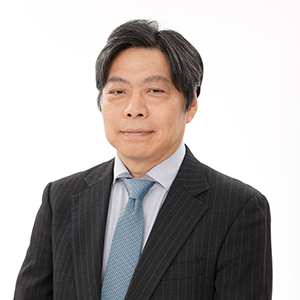
Bio: Junichi Tanaka is Senior Chief Engineer and Chief Technology Officer of Nano-technology Solution Business Group, Hitachi Hightech company. Holding Dr. thesis in Engineering.
Throughout my professional journey, I have dedicated myself to the meticulous monitoring and control of semiconductor device fabrication processes. My initial endeavors saw me designing plasma process simulators and crafting monitoring tools specifically for plasma etchers. From 1998 to 1999, I was honored to be a visiting scholar at the University of California, Berkeley. During this tenure, I spearheaded the development of a pioneering force-potential model, which facilitated molecular dynamics simulations of SiO2 reactive ion etching, providing predictions of etched pattern shapes.
In the years that followed, I innovated various techniques to enhance etched profiles by harnessing the power of plasma spectra and integrating a customized FTIR wall monitor. These advancements paved the way for my involvement in a comprehensive Advanced Process Control (APC) project. My dedication to precise CD control was recognized in 2008 when I was awarded the Semicon-Japan Technology Symposium Award. A significant component of this achievement hinged on the consistent repeatability of CDSEM measurements.
As we gaze into the future of semiconductor manufacturing, it's evident that there's a growing need for diverse metrology and inspections beyond mere dimension measurements. Presently, my endeavors are focused on exploring state-of-the-art technologies within the realms of metrology and inspection. I am particularly intrigued by various time-domain metrologies employing both lasers and electron beams. Concurrently, I am probing into other promising sources and techniques to further this field.
Abstract: This time, under the theme 'Lab to Fab', I want to talk about our new electron microscopes that can be used directly for inline measurements and inspections. First I will show our Mirror electron microscope which can visualize the disturbance of surface potentials on flat wafers. This tool is especially useful to detect and classify defects in a bulk SiC wafer.
Then I will focus on laser and electron beam interactions for inspections. In this type of SEMs, we are searching for time-domain metrology instead of steady image analysis. We are developing photon pump and electron probe type SEM. Also similar type of microscope, PEEM (Photo electron emission microscope), is widely used for the analysis of materials. If you have any experience or suggestion about usage of PEEM we’d also like to have some discussion.
We also have a tool that use THz waves (is-TPG type) to inspect medicine tablets. We are not looking into its use for semiconductor materials right now. But if you have thoughts or experiences with THz waves for new material testing, we'd like to hear from you to search for collaboration opportunities.
Finally, shifting our focus slightly, I’d like to introduce our collaboration with Delft University to develop a MEMS mirror aberration corrector. This example of partnership underscores our capability to successfully undertake remote development of cutting-edge technology.